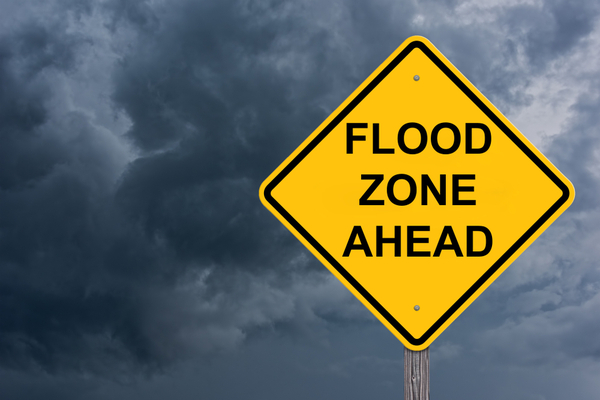 What To Do Before, During, and After a Flood Hits
What To Do Before, During, and After a Flood Hits
An Atmospheric River event is set to cause possible historic flooding across the Central U.S. this week. Flash floods can unfold in moments and wreak havoc. Surprisingly small amounts moving water can sweep you or your vehicle away. Here’s what you need to know before, during and after a flood, since preparation can be critical and life-saving.
As AccuWeather reports, flooding is a threat across the United States year-round, and flash floods can happen minutes to hours after a period of excessive rainfall or a sudden release of water from a dam failure or ice jam, according to the National Weather Service (NWS).
In the desert, flash floods can roar through dry river beds miles away from where the heavy rain is falling. This makes them incredibly dangerous. These floods are sudden and fierce, with rapidly rising water that can cause severe damage and trigger mudslides. Low-lying areas with streams, rivers and storm drains are most at risk of flash flooding, according to the NWS.
In addition to forming rapidly, flash floods also move quickly and powerfully. Just 6 inches of moving water could easily knock a person off their feet or stall a car when water is sucked into the tailpipe. If the water reaches a foot deep, it can sweep away most vehicles, the NWS reports.
“It is NEVER safe to drive or walk into flood waters,” the NWS notes on its page to promote its famous Turn Around Don’t Drown® safety message. The national 30-year average for flood deaths is around 127 people per year. National Weather Service data also indicates that nearly half of all flash flood fatalities are vehicle-related.
Most flash flooding is caused by slow-moving thunderstorms, multiple storms moving over the same area, or heavy rain from hurricanes or tropical storms. Flash floods can vary in how fast they form. While forecasters can anticipate where some floods will happen weeks in advance, others can occur with very little notice. Here are some tips to prepare yourself for the possibility of floods.
What to Do Before a Flood
•Create a communication plan. Whether this takes the form of having a specific person to contact to update your status or a safe location to meet up with loved ones, having a plan in place will give you peace of mind.
•Prepare for an emergency. Water service may be interrupted during a flash flooding event. It is good practice to have enough water, food and medicine to last at least three days in case of an emergency. Supplies like batteries, blankets, flashlights, a first aid kit and a battery-powered radio will also be helpful.
•Know your risk. Research and understand the fastest way to get to higher ground and how flash floods might affect your area. If it’s likely your home will flood, don’t wait. Evacuate yourself and your family.
•Prepare your home. If you’re home has a sump pump, make sure it is working and consider having a backup. Mark your electric circuit breakers clearly for each area of your home. Ensure your insurance covers flooding — standard homeowner’s insurance does not (this must be done in advance before a threat of flooding emerges). Make sure all electronic devices are charged.
What to Do During a Flood
•Get to higher ground, especially if you live in a flood-prone or low-lying area.
•Obey evacuation orders. If authorities tell you to evacuate, do it immediately. Lock your home and disconnect utilities and appliances if you have time.
•Practice electrical safety. If water levels rise to cover electrical outlets or cords, do not enter the room or your basement. Stay out of water that may have electricity in it, especially if you see sparks or hear crackling or buzzing noises.
•Avoid floodwaters. Do not walk or drive through floodwaters. It only takes 6 inches of moving water to knock you off your feet, and 12 inches to sweep away your vehicle. If you’re trapped by moving water, get to the highest possible point and call 911. Do not drive into flooded roadways or around a barricade — turn around. Floodwater is often deeper than it appears and can hide hazards like sharp objects or electrical wires.
What to Do After a Flood
•Stay informed. Follow your local news outlets or social media for updated information on road conditions. Ensure your water is safe to use — authorities may recommend boiling water after a flood. Utility companies may have services or apps to help you get service back. Never use a portable generator inside your home or garage — carbon monoxide poisoning is one of the leading causes of death after storms that cause power outages.
•Avoid floodwaters. Standing water hides danger, like sharp objects or toxins. Avoid driving on a flooded road and listen to all emergency responders.
•Wait for the all-clear. Do not enter a flood-damaged building until authorities say it’s safe. If you do enter, be extremely cautious as water can cause walls to collapse or ceilings to fall. Make sure the electrical system has been turned off.
—
Photo Credit: Jim Vallee / Shutterstock.com


